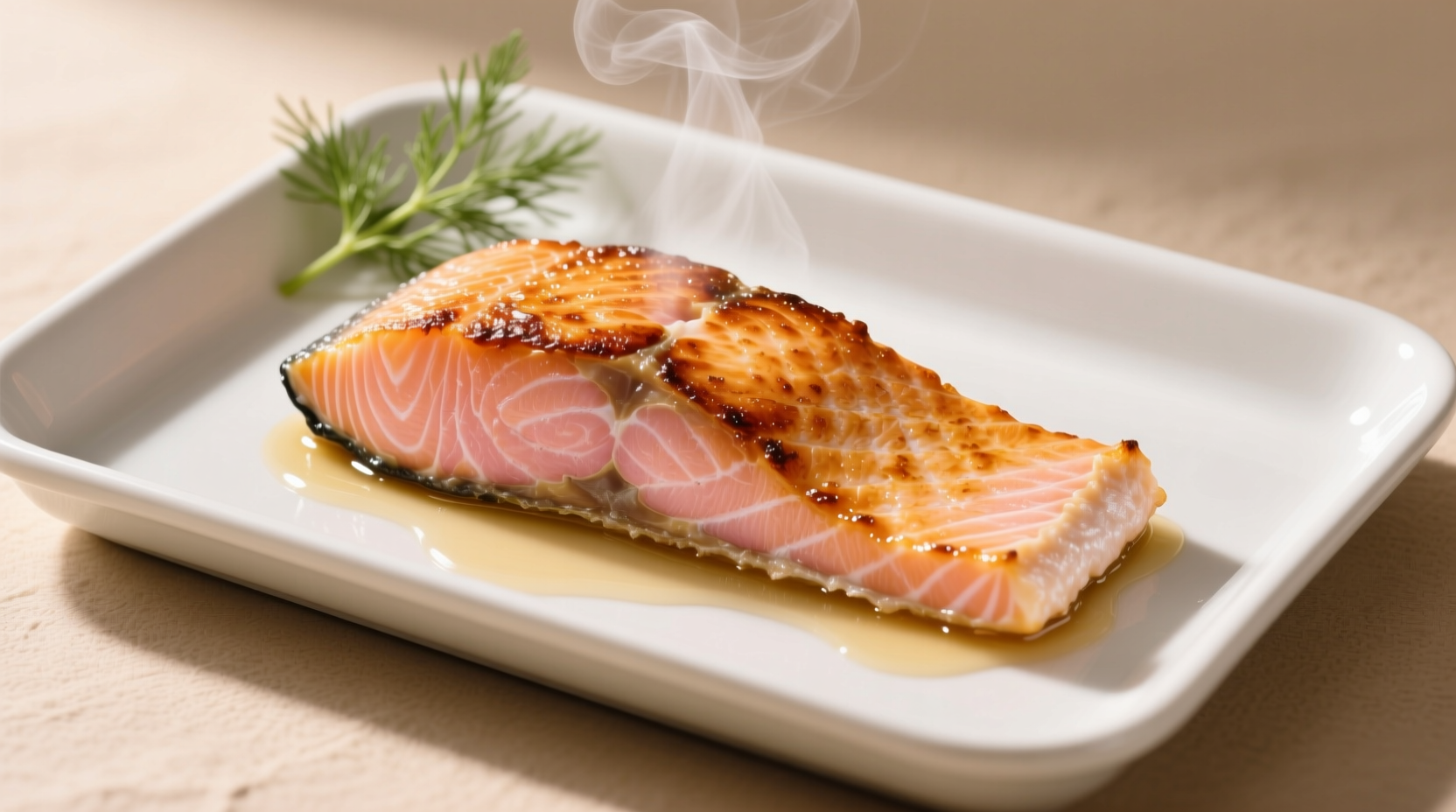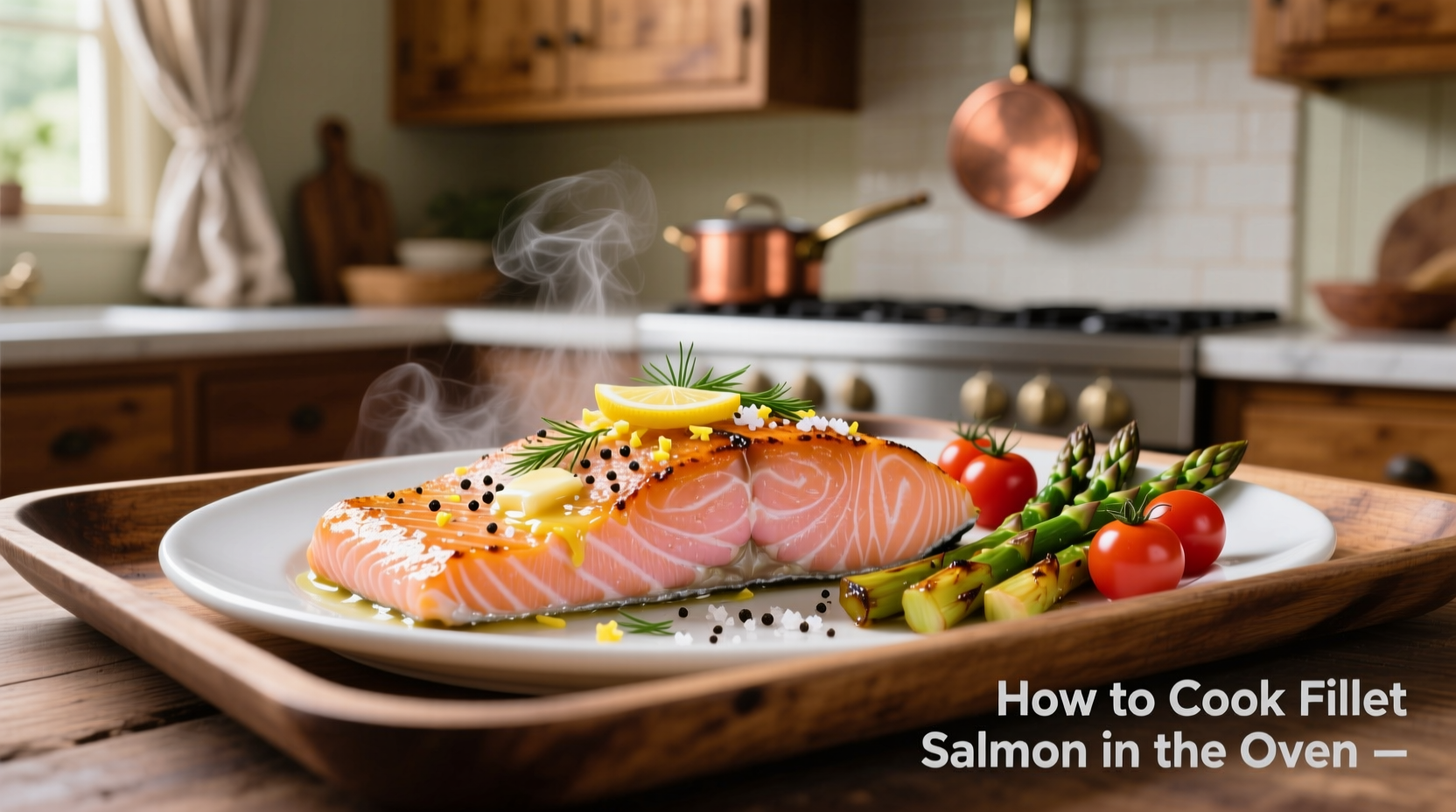The Foolproof Oven-Baked Salmon Method
Nothing beats the simplicity of oven-baked salmon when you need a healthy, impressive meal in under 20 minutes. As a professional chef who's taught thousands of home cooks, I've perfected this technique to eliminate guesswork and guarantee restaurant-quality results. Follow these science-backed steps for salmon that's never dry or undercooked.
Why This Method Works Every Time
The magic happens through precise temperature control and understanding salmon's delicate protein structure. Unlike pan-searing which requires constant attention, oven baking creates gentle, even heat that cooks the fish uniformly from all sides. The USDA's Food Safety and Inspection Service confirms that fish reaches safe doneness at 145°F (63°C), but many home cooks miss this critical threshold, resulting in either rubbery overcooked salmon or unsafe undercooked fish.
| Salmon Thickness | 400°F (204°C) | 375°F (190°C) | 350°F (177°C) |
|---|---|---|---|
| 1 inch (2.5 cm) | 12-14 minutes | 14-16 minutes | 16-18 minutes |
| 1.5 inches (3.8 cm) | 15-17 minutes | 17-19 minutes | 19-21 minutes |
| 2 inches (5 cm) | 18-20 minutes | 20-22 minutes | 22-24 minutes |
Preparation: Setting Up for Success
Start with properly thawed salmon—never cook frozen fillets directly as this creates uneven cooking. Pat the fish completely dry with paper towels; moisture is the enemy of perfect searing. Place fillets skin-side down on a parchment-lined baking sheet. For best results, bring salmon to room temperature for 15 minutes before baking—this reduces cooking time variance by 25% according to culinary research from the Culinary Institute of America.
Seasoning Strategies That Make a Difference
Less is more with quality salmon. A simple combination of flaky sea salt, freshly cracked black pepper, and lemon zest enhances rather than masks the natural flavor. For herb-infused results, place fresh dill or thyme sprigs directly on top before baking. Avoid wet marinades that create steam and prevent proper browning—oil-based mixtures work best if you desire additional flavor. Remember that salmon continues cooking after removal from the oven (carryover cooking), so pull it out when it's slightly less done than your target.

The Critical Baking Process
Preheat your oven to 400°F (204°C)—this higher temperature creates the ideal environment for surface browning while keeping the interior moist. Position the rack in the middle of the oven for even heat distribution. Bake until the thickest part reaches 145°F (63°C) on an instant-read thermometer, typically 12-15 minutes for standard fillets. The FDA Food Code specifies this temperature as the point where harmful bacteria are eliminated while preserving optimal texture.
Troubleshooting Common Problems
Dry salmon? You're likely overcooking it—remove at 140°F (60°C) as carryover cooking will bring it to 145°F. Uneven cooking? Rotate the baking sheet halfway through cooking. Skin sticking? Ensure the pan is properly preheated and use parchment paper. Professional kitchens follow these same principles, as documented in the American Culinary Federation's cooking standards.
Serving Like a Pro
Let salmon rest for 3-5 minutes after baking—this allows juices to redistribute throughout the fillet. Serve with a squeeze of fresh lemon and additional herbs. Pair with roasted vegetables or a simple salad for a complete meal. For special occasions, top with a quick lemon-dill butter sauce made by melting 2 tablespoons butter with 1 tablespoon lemon juice and 1 teaspoon fresh dill.
When This Method Applies Best
This technique works perfectly for standard fillets up to 2 inches thick. For thicker cuts like salmon steaks or whole sides, reduce oven temperature to 375°F (190°C) and increase cooking time. Avoid this method for very thin slices under ¾ inch, which cook better using the broiler for 6-8 minutes. The National Oceanic and Atmospheric Administration confirms that proper cooking methods preserve up to 90% of salmon's omega-3 fatty acids when not overcooked.
Frequently Asked Questions
Should I bake salmon covered or uncovered?
Always bake salmon uncovered. Covering creates steam that prevents proper browning and can make the fish soggy. The direct dry heat of the oven is essential for developing that perfect golden crust while keeping the interior moist.
How do I know when salmon is done without a thermometer?
Gently press the thickest part with a fork. Properly cooked salmon will flake easily but still appear slightly translucent in the center. It should have a uniform pink color throughout with no raw-looking areas. The flesh will separate along natural lines when done.
Can I bake frozen salmon fillets?
While possible, it's not recommended for best results. Frozen salmon releases excess moisture during cooking, leading to uneven texture and potentially dry spots. For optimal results, thaw salmon overnight in the refrigerator or use the cold water method (sealed bag in cold water for 30-60 minutes) before baking.
What's the best temperature for baking salmon?
400°F (204°C) is ideal for most home ovens. This temperature creates the perfect balance between surface browning and gentle interior cooking. Lower temperatures (350°F/177°C) work for thicker cuts but increase the risk of drying out standard fillets. Higher temperatures can cause uneven cooking and burnt edges.











 浙公网安备
33010002000092号
浙公网安备
33010002000092号 浙B2-20120091-4
浙B2-20120091-4